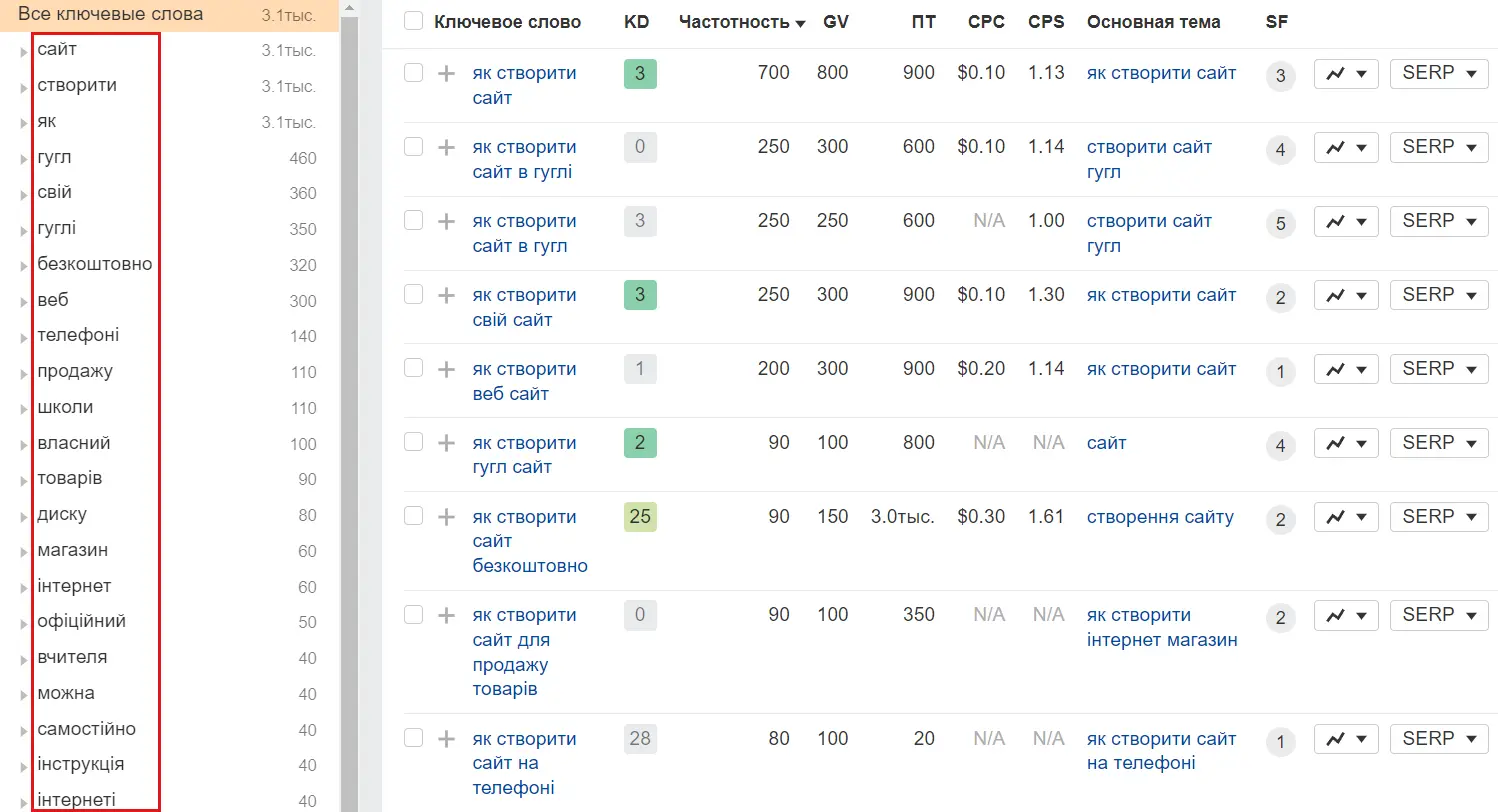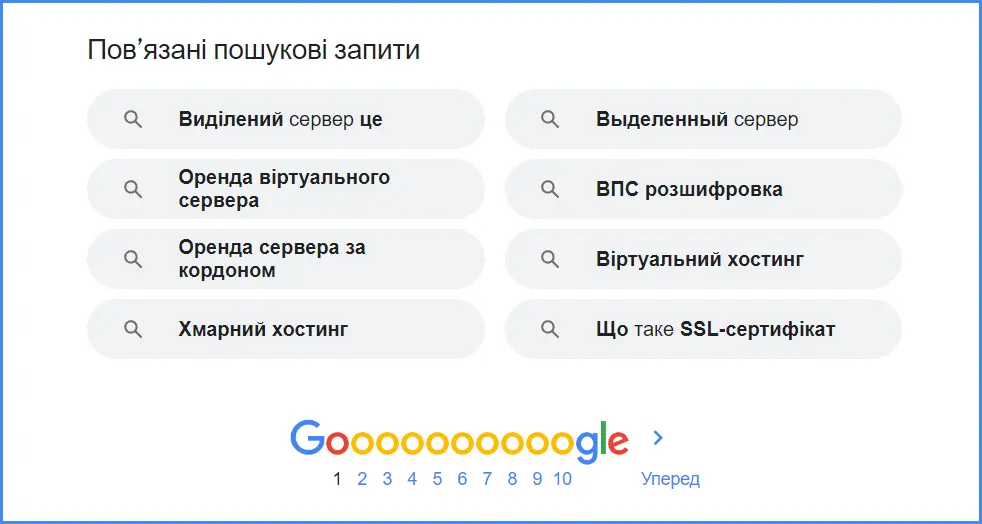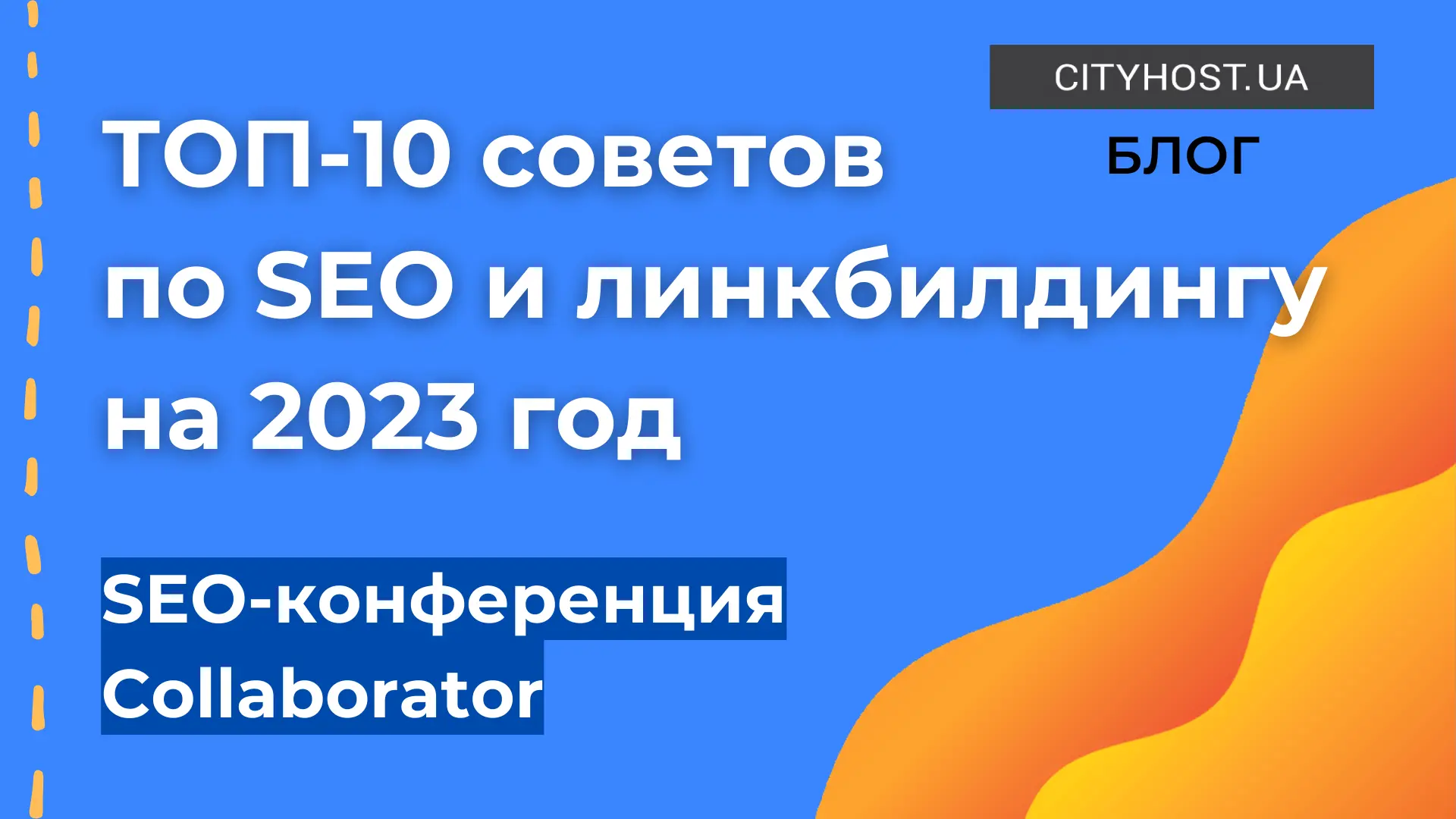
Still think SEO is all about keywords and keyword density? No wonder then that your site is still not #1 in Google search results. Yes, search engines take keywords into account, but in 2023 they have become much smarter.
Today's crawlers can do much more than just skim through a few pages of a site, blog articles, and description about a site to pick out the most obvious keywords and quickly assess their relevance. Today, search engines use very advanced, complex algorithms that also take into account the so-called latent semantic indexing (LSI — Latent Semantic Indexing).
In this article, we will consider what LSI words are, as well as how to write LSI text.
The promotion of a site in Google is affected not only by the quality of the content, but also by many technical factors, such as hosting and tools for competent optimization. To learn more about this, we recommend reading the article How hosting affects the ranking and promotion of the site .
What are LSI texts
LSI texts should be the basis of all SEO strategies. It is likely that those competitors who are above your site in the search results are creating and placing LSI texts.
Google's algorithms use natural language processing (NLP) to understand the relationships between words in sentences and between sentences. In this way, they find out the content of the pages. However, to better understand what the page is about, they use LSI. This allows search engines to understand whether your text is about the Battle of Waterloo or Waterloo Station.
In addition, words and phrases are semantically related not only to synonyms or words that have a similar meaning, but also to other words. Therefore, LSI can analyze whether the subtopics in your content correlate with the main keyword and determine whether your text is comprehensive enough.
First of all, LSI is not a tool and is not a direct alternative to keywords or other SEO tactics. LSI is a way of writing and using language that makes search engines think your content is authoritative, relevant and ideal for placement in the first positions of search results. LSI is a technique used to analyze data for trends, patterns, and relevance.
Latent semantic indexing takes the content of a web page and removes mostly irrelevant words such as pronouns (he, she, it) and conjunctions (and, because, but). The remaining text is scanned and the vocabulary is compared to known, reliable sources of information on the same topic. For example, an authoritative LSI text about carpets will most likely contain the following words:
Carpet
Weaving
Pattern
Nap
Lining
Wool
Fit
Stacking, etc
This list of LSI words may change slightly as other approved texts are added to the general understanding of the topic.
The content of your web page, blog post, or article will be compared against this list, and the closer your vocabulary matches a known list of relevant vocabulary, the more likely your content will be seen as relevant, authoritative, and trustworthy. Therefore, it will get a higher ranking in the search results.
Thus, when we talk about writing LSI texts, we mean the breadth of relevant vocabulary, not keywords and their density.

Read also: How to optimize a website article .
How the LSI technique appeared
LSI was first introduced into Google's algorithm in 2004 to help the search engine provide more relevant results to users. This made it possible for Google to understand anchor text used in hyperlinks. With this update, Google search results have changed dramatically. Google no longer looks at a single keyword on your page and how often you use it. Instead, it looks at everything your page has to offer.
However, updating Hummingbird requires careful attention. Released in August 2013, the Hummingbird algorithm update improved Google's ability to interpret searcher intent using natural language processing and Latent Semantic Indexing (LSI). Hummingbird also penalized sites that overloaded pages with keywords and low-quality content.
At the heart of Hummingbird is the very important concept of semantics. Even the most modern computers are still pretty stupid. While it is easy for humans to distinguish between two different but similar concepts (due to context), computers cannot do so unless they are told to do so.
Semantic search is the concept of improving search results by focusing on user intent and how the search item relates to other information in a broader sense, or its contextual relevance. At its core, semantic search focuses on determining what the user actually means, rather than typing in keywords and then returning relevant results.
For example, if a user searches for the term "weather", it is much more likely that they are looking for a forecast for their area, rather than an explanation of the science or history of meteorology. So, in this example:
"Weather" is the subject of the search
The desire to get a local forecast is a user intent
The difference between a weather forecast and an explanation of meteorological concepts lies in the context
Of course, Google's algorithm can't be absolutely sure what a person wants, so it returns different results just in case.
How to write a good LSI text
One of the easiest ways to start creating LSI content is to write down your main keyword on a piece of paper, right in the middle. Then surround the keyword with as many relevant words as you can think of. For example, if your keyword is cupcake, you can write LSI words like:
Pie
Snack
Food
Recipe
Bilberry
Flour
Prepare
Warm
Coffee
Form for baking
Tray
Once you have this list, continue writing content, trying to include enough of these words, but without sounding silly or forced. As a general rule, a 600-word article should contain about 100 such LSI words that match the topic.
You can search for words with the help of SEO tools that analyze adjacent and related terms with the main keyword. For example, this is how Ahrefs looks like a list of terms that coincide with the key query "how to create a site".

Google tips will also help in the search, which can also be used when forming a pool of synonyms. For example, this is what you can see when asking "what is a virtual server ".

There are also free online tools you can use to find LSI words.
If you include your main keyword phrase at the beginning of your text, somewhere at the bottom and once in the middle, you'll be fine, and if you use a wider range of contextually relevant words, your text will have a better chance of achieving what you want.
In order to write a quality LSI text, you must first of all have a good understanding of the topic of the article. It is also important to form an idea about the target audience in order to know their pains and needs. Then you should perform a series of actions:
Create an associative LSI core — a group of words closely related to the main topic.
Then they need to be evenly distributed throughout the text, in particular, include them in the heading and subheadings.
It is recommended to use lists, images, graphics in the texts. This will help to structure the information and make it more accessible for perception.
At the final stage, you should write meta tags and hidden attributes, as well as strengthen the text with links to other articles.
After that, the creation of the LSI text can be considered complete. Then it remains only to analyze his statistics. We would like to highlight the main features of LSI texts:
The article should reveal the essence of the title as much as possible without unnecessary information
The text should use synonyms of keywords related to the query topic - they should be evenly distributed
The text should be written in an accessible language, have a clear structure and a pronounced rhythm (alternation of short and long sentences)
Meaningful and grammatical errors are not allowed
Advantages of LSI copywriting compared to SEO copywriting
Most people confuse SEO and LSI copywriting. In fact, they are united only by the goal — to display the written article on the first lines in the search engine. However, the principle of their work is very different.
When writing SEO texts, it is important to include a certain number of keywords in them. In the case of LSI copywriting, the main emphasis is on the content and format of the text.
To understand which technique to use for site promotion, consider whether you have a commercial project or an information project. If the first option, look at SEO, if the second option, look at LSI. Next, choose the main search queries for which you want to be in the top, and analyze the competitors.
Look at their texts. If you see the entire keyword phrase in their texts (headings and subheadings are not taken into account), then they are using SEO optimization. If the key phrase is divided into parts, LSI is used. Prepare a more complete, relevant and high-quality text than your competitors. This will increase your chances of getting to the top, but it does not guarantee them, because there are many other factors that affect whether a page will be in the top or not: external optimization, the age of the domain , the amount and quality of content on it, whether sanctions have been applied to it , how you optimize images and meta tags and more.
Read also: How the age of the site affects promotion in Google .
Conclusion
Brands and content marketers who know how to balance LSI and keyword density (SEO) tend to achieve better search results.
Think about it from Google's perspective. There is a desperate need for valuable, high-quality content on the web, and Google is constantly doing everything it can to make its algorithms better.
In summary, if you are consistent in your SEO efforts, strive for quality and do not abuse keywords, your site's ranking will organically soar in Google's search results.








